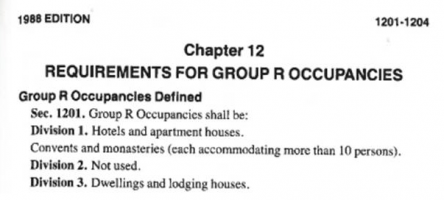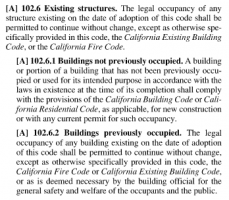When converting two single story and one two story motel (all exterior door exits) built in the early 80's on a piece of property what are the requirements for fire codes? We were told today that we could not have two units side by side and we would have to add an exit at the back (creating a shotgun style/single wide mobile home) type apartment. A single unit efficiency apartment was completely out of the question because of not having two exits (we can live with this).
Additionally we have to add the sprinklers to this. No idea of the cost on that yet, but we know its going to be very expensive.
They basically said you can't have two exits on the same side of the building. Is that true?
Can anyone shed any light?
Additionally we have to add the sprinklers to this. No idea of the cost on that yet, but we know its going to be very expensive.
They basically said you can't have two exits on the same side of the building. Is that true?
Can anyone shed any light?



